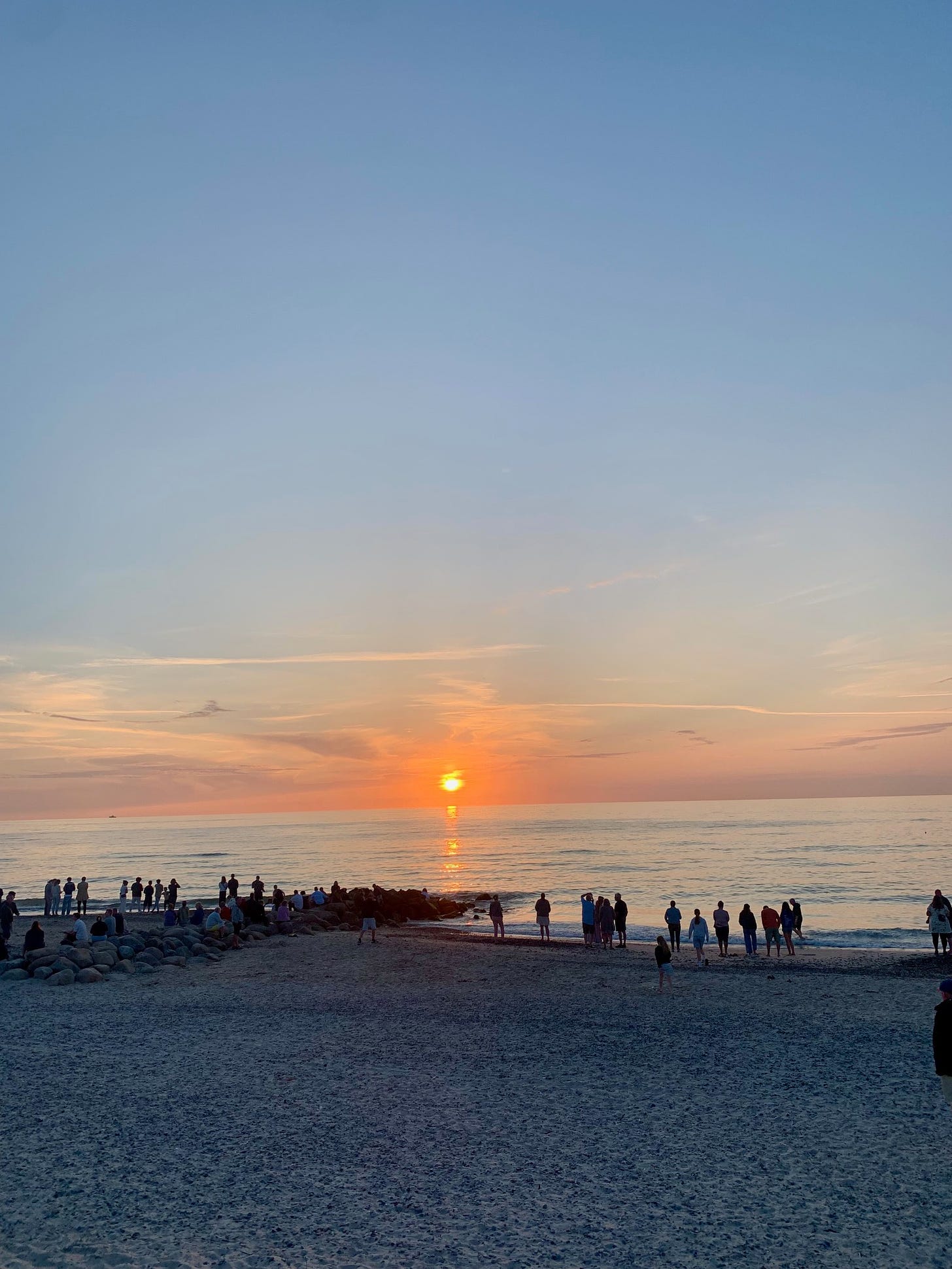Is Finland the Happiest Country on Earth?
Of Course Not. In Real Life, Denmark Wins Hands Down
I’ve been thinking a lot about regional differences around these parts. The other day, on a website for American expats that I moderate, someone described the Finns as “the Latinos of the North.” Why? This person said that the Finns are possessed of duende, the Spanish idea of meeting the world with heart and living passionately. I was skeptical. No offense to the Finns, but nary a one of them has ever met my eye, much less smiled at me, although I’ve been to Helsinki a few times now. I don’t know if duende played a role or not, but the 2024 World Happiness Report once again put Finland in the No. 1 spot.
With respect to happiness, I’m clearly in a good neighborhood according to the report:
Six out of the top seven happiest countries in the world for 2024 were Northern European countries. Finland took top honors—for the tenth year in a row—with an overall score of 7.741, followed (in order) by Denmark (7.583), Iceland (7.525), Sweden (7.344), Israel (7.341), the Netherlands (7.319), and Norway (7.302).
All of the Nordic countries score high on trust and low on corruption and all of them merge free-market capitalism with a generous welfare system. Everyone has it pretty good here. Because of this, calling one of these countries happier than another requires getting pretty granular. I’ve looked over the report’s methodology and I get it. The data is all self-reported, which makes sense:
Our measurement of subjective well-being continues to rely on three main well-being indicators: life evaluations, positive emotions, and negative emotions (described in the report as positive and negative affect). Our happiness rankings are based on life evaluations, as the more stable measure of the quality of people’s lives.
But I personally wouldn’t put the Finns first. In my experience (and what else matters besides our own experience?), Danes are happier than anyone else around here. Much happier. In fact, Denmark has won the top spot three times, most recently in 2016.
I never paid attention to the hygge craze and I’ve never believed that Danes had some kind of monopoly on living well, even though they’ve consistently scored well in these reports. But I do love to visit Denmark. In fact, every summer, we leave Stockholm and spend a week in the little Danish seaside village where I am now. It’s the happiest place I know. Just thinking of it makes me smile.
So below are a few unscientific reasons that I think the Danes win in the happiness wars:
They Know From Flavor: OK, it’s only food, but if you’re like me, then food is 90% of life. In most of Scandinavia, dinner goes like this: They fry some meat and boil some potatoes and then put it on a plate. One example of this approach, which I would describe as bare bones, is Swedish meatballs. Here is the complex recipe, received from wise elders and preserved through the veil of time: Mix meat, bread crumbs, salt and pepper, then fry it in butter. That’s it. If you’re very lucky, there might also be allspice, nutmeg, cream, minced onion and ground ginger and maybe some sour cream. But usually there isn’t.
In these parts, they don’t venture much beyond salt and pepper, they just sauce afterward. Flavor is considered additive, not integral. I am a serious cook and to be honest, this makes me insane. Before I moved here I used to joke that there are only eleven ingredients in Swedish cuisine: The egg, dill, salmon, potatoes, cheese, beef, chicken, tiny shrimp, bread, fennel, and, of course, mayo (one puts mayo on top of everything here). Now that I’ve lived in Sweden for five years, I realize that, sadly, this was no joke.
Public Displays of Happiness: Danes smile, laugh and joke with each other, in public. Audibly! They walk around enjoying themselves! Visibly! And they are happy to chat, even to strangers. This is unthinkable in most of the Nordics where, for the most part, people would rather die than shoot the shit. This morning, as I was walking by the sea, I smiled at a woman who was approaching. This is something I would never attempt in Sweden, but I thought I was safe. She flinched and her eyes widened in something approaching fear. “She’s Swedish, I bet,” my husband said. Sure enough, as she got closer, she greeted us (rather gruffly) in Swedish and kept moving, eyes forward.
Fewer Rules: When I first came to this town, I was shocked to see full-strength beer in the grocery store, just sitting there, ripe for the taking. In Sweden, you can buy only weak beer at the grocery store. You can only get the real stuff at Systembolaget, the government-owned chain of liquor stores which is, in fact, the only liquor store in the country. And Systembolaget closes at 3:00 on Saturday afternoon and doesn’t reopen until Monday morning. This can be, oh, shall we say, inconvenient? But in Denmark, it’s never too early or too late, for that matter. Because of this ease, the Danes don’t fetishize alcohol the way the Swedes do. They don’t make things weird with it. In a Danish restaurant the other night, there was a walk-in wine cooler taking up an entire wall. You could go in and pick out what you wanted to drink with dinner or–and this is shocking for a Swede– take a chilled bottle home with you, if you liked. No waiting for Monday morning.
Eye Contact: This exists in Sweden, but only in a very strange way. Everyone is taught from birth that no one is better than they are. Great! But alas, by the same token, they also learn that they are not better than anyone else. Every Swede is made to understand–and every government interaction enforces the message– that they are not special. This, combined with a culture very sensitive to the rights of women, casts a bit of a shadow over the boys. So while men do look, they look yearningly, as if at something forbidden. When I walk around with one of my beautiful daughters, I see this all the time. They look at her the way I look at a baked Brie, but one that I’ll never get to taste. But Danes suffer no such inculturation, so there’s a lot going on on the street. It’s not quite like Italy, but it’s pretty lively.
So to summarize my unofficial analysis of how Danes win at happiness, it’s the little things, plus the joie de vivre. It’s the rémoulade (which they seem to think is Danish), the good bread, the fresh fish, yes, but it’s also the gusto and the sense that you are free, which cannot be measured.
In case you were wondering, rounding out the Top 10 are Luxembourg (No. 8), Australia (No. 9) and Switzerland (No. 10). The United States ranked No. 23 with a score of 6.73. And on the lower end? According to the report:
The least happy country in the world for 2024 was Afghanistan, whose 143rd-place ranking of 1.721 can be attributed in part to a low life expectancy rate, low gross domestic product rates per capita, and perhaps most importantly, the recent Taliban takeover. Rounding out the bottom five are Lebanon (2.707), Lesotho (3.186), Sierra Leone (3.245), and DR Congo (3.295).








Love the personal perspective on what contributes to the danes being so happy. I hope to make it there someday to experience it firsthand.
So the Swede’s are the Mainers of Scandinavia. Makes sense